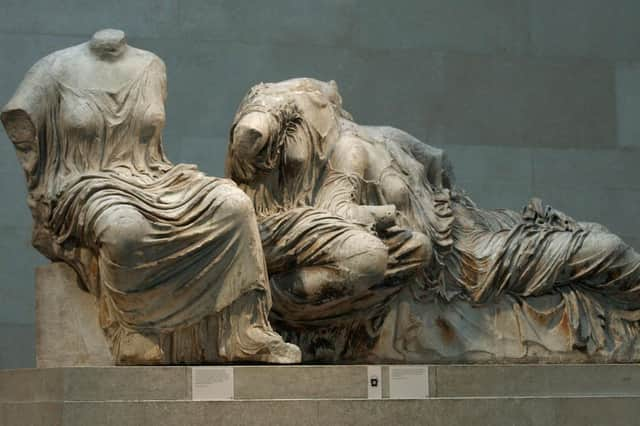'Elgin Marbles' solution? How American billionaire Leonard Stern may have created a model for reunification of Parthenon sculptures in Athens – Matthew Taylor


Leonard Norman Stern is a New York real estate mogul worth nearly £5 billion. New York’s Metropolitan Museum, aka the Met, is the largest museum in the Americas, with a collection of over two million objects.
The Museum of Cycladic Art is an institution created by Greek shipping magnate Nicholas P Goulandris. The Greek Government hopefully requires no further explanation.
Advertisement
Hide AdAdvertisement
Hide AdSo, on to the story. Leonard Stern amassed an impressive collection of ancient Cycladic art. For those that haven’t seen it, these works are generally small stone sculptures dating from 3,300 to 1,100BCE.
This is way older than the Ancient Greece of the Parthenon, the Olympic Games and Alexander the Great that we tend to think of – but at the same time these figurines are oddly ageless and could be contemporary pieces. They are works that make you realise that maybe the minimal aesthetic of modern art isn’t always so modern.
However, Stern recently entered an agreement with a new entity, the Hellenic Ancient Culture Institute (an organisation whose directors represent Stern and the Goulandris Museum) – essentially a special-purpose vehicle created for this deal. That deal is, broadly speaking, for ownership of Stern’s collection to be transferred to the Greek state, but that, for the next 25 years, the works will be exhibited in the Met. After ten years, other artefacts covered by the agreement will periodically travel to Greece for temporary exhibition.
This whole arrangement is not without controversy (that though is a story for another day). What is interesting however is that a deal was reached and agreements were made and signed off by the Greek parliament.
Greek Prime Minister Kyriakos Mitsotakis has described the agreement as "a blueprint for other solutions to come", hinting that this was in reference to the Parthenon Sculptures, aka the Elgin Marbles, in the British Museum.
Recently, George Osborne, the chair of the British Museum’s trustees, stated that he is “confident that there are long-term partnerships to be struck” in relation to the return of disputed artefacts. Both sides, it appears, are in the mood for making a deal – and a possible template for one is now out there.
Previous negotiations have stalled over the matter of ownership – but what if the British Museum were to acknowledge Greece’s ownership of the works, while retaining the rights to exhibit them – for now. Surely this could be a big step forward?
In the past, Greek governments have shied away from serious negotiations for fear of how a compromise settlement would play out in the media. Any steps forward are better than no steps at all though.
Advertisement
Hide AdAdvertisement
Hide AdThe issue can be broken down into chunks and each of these can then be a small move towards the ultimate goal. There are many ways this might be a win-win scenario for both of the key parties here, with neither losing face, whilst jolting the debate on from the current stalemate that has existed for many decades.
To move forward will almost certainly require compromises – the question though is what compromises either side will accept. Maybe, we’ve begun to glimpse the terms for a new playing field for the debate?
Matthew Taylor is a member of the British Association for the Reunification of the Parthenon Sculptures
Comments
Want to join the conversation? Please or to comment on this article.